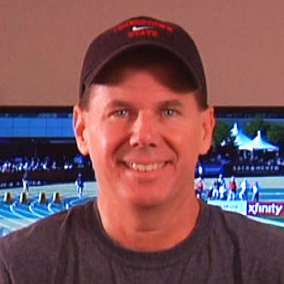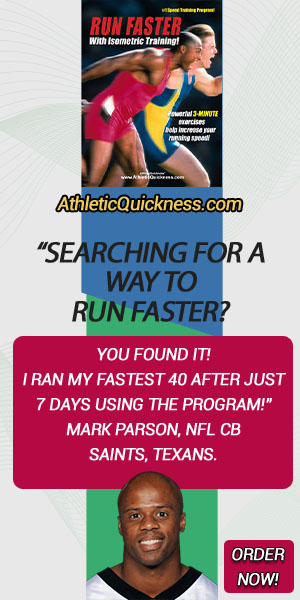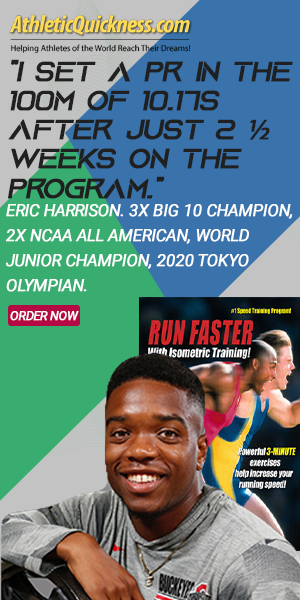Increasing your sprinting speed, stride and turnover rate comes down to the training of your hip flexor muscles.
In spite of their inherent strength, the hip flexors are still significantly underdeveloped in most athletes, including professionals. When was the last time you trained your Iliacus muscle?
These muscles are mainly located in the pelvic region of the body. Their main function is to flex the thigh up on the pelvis seen in our image below.

HIP FLEXOR MUSCLES. A.K.A. THIGH FLEXORS
The hip flexor muscles are a group of 7 muscles on each side of the body for a total of 14. Their names are the Psoas, Iliacus, Sartorius, Pectineus, Rectus Femoris, Adductor Longus and Adductor Brevis. These muscles are illustrated below in Figure 1.

As you can see in Figure 1, the hip flexors are rather long muscles and in fact the Sartorius muscle is the longest muscle in the body. It takes its origin from the anterior superior iliac spine and inserts below the knee at the upper medial tibia. In doing so, it crosses two joints, the hip and the knee, and therefore produces actions at both.
The Psoas muscle starts up high in the lumbar spine and actually begins at the transverse process of the 12th thoracic vertebrae. It inserts into the lesser trochanter of the femur. In doing so, it crosses the hip joint and is therefore a flexor of the hip.
Other muscles such as the Adductor Longus and Adductor Brevis have more than one function. Since they too cross the hip joint, they are considered flexors of the hip. They also adduct the hip due to their insertion points on the femur.
Adduction is the action of muscles pulling inward toward the midline. You may be familiar with using the adductor and abductor weight machines at your local gym.
If you stop to consider the total length of all of these muscles, starting with the origin of the Psoas up top, down to the insertion of the Sartorius below, you may be surprised to find that they are close to a combined three feet long. This alone should peak your interest in trying to find more ways in developing them.
The hip flexors main function is to flex the thigh up on the pelvis. This occurs during actions such as walking, running and jumping, and is shown in Figure 2.

In spite of their inherent strength, the hip flexors are still significantly underdeveloped in most athletes, including professionals. When was the last time you trained your Iliacus muscle? See what I mean?
Part of this has to deal with there not being very many good weight machines in existence that target them. Even popular body weight exercises like box jumps and lunges won’t effectively get at them either. Yet another possible reason is because they are hidden deep within the midsection of the body, there is no real attractive reason to exercise them. But whatever the case may be, they typically go untrained or at the very least, under-trained.
As they pertain to running, the hip flexors main job is to create the stride. This occurs when you run where your foot leaves the ground behind you and your hip flexors must pull the weight of the entire leg underneath you and up in front of you. Follow the movement of the right foot and leg in the sequence of images in Figure 3 below.

This is a tremendous power move during the running motion and is responsible for creating significant horsepower, i.e., manpower. The amount of distance covered by the swing phase has to be at least 10 feet or more. But if you have weak hip flexors, your stride will be shortened and your speed will be slow.
If there is one area that athletes are lacking running power in, it is this motion. It is also a very easy one to improve upon and see immediate results. You can try an exercise here to help you instantly improve their strength.
It is perhaps no coincidence that the famous Heisman Trophy pose is one that displays a very prominent hip flexion position. Could it be that the best athletes in college football as well as other sports have superior hip flexor development? If nothing more, it’s at least something to consider improving upon for you as an athlete as you try to better yourself.



